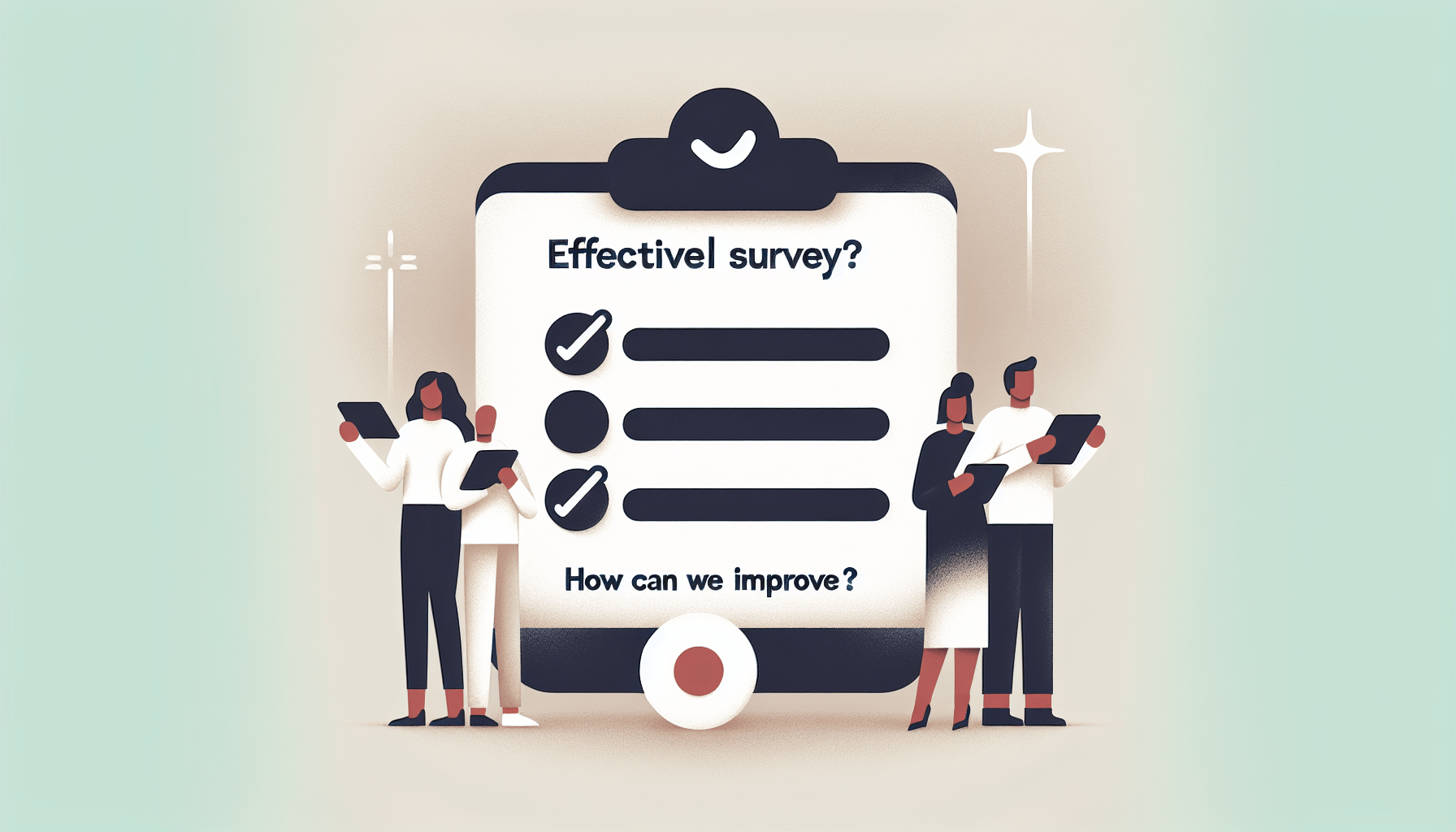Getting feedback from customers can sometimes feel like pulling teeth—frustrating and, let’s be honest, a little daunting! You might be worried about what to ask, how to ask it, or even if anyone will bother to respond. Trust me, you’re not alone in feeling this way.
But here’s the good news: if you stick with me, I’ll walk you through a simple and effective way to conduct a customer satisfaction survey that actually gets results. By the end, you’ll be ready to gather valuable insights and make your customers feel heard.
We’ll cover everything from defining your objectives to choosing the best method and questions. Plus, I’ll share tips on timing and distribution so your survey doesn’t end up in the digital black hole. Let’s dive in!
Key Takeaways
Stefan’s Audio Takeaway
Key Takeaways
- Choose the right time to survey customers, preferably right after their interaction with your brand.
- Clearly define your survey objectives to tailor your questions effectively.
- Select a survey method that matches how your audience engages with your product or service.
- Use a combination of open-ended and closed-ended questions for balanced feedback.
- Keep your survey short, focusing on 5-10 relevant questions to boost response rates.
- Ensure a logical flow in your questions to maintain respondent engagement.
- Send surveys soon after customer interactions for better results.
- Use distribution channels that your customers are comfortable with.
- Assure anonymity to encourage honest feedback from respondents.
- Test your survey before launching to avoid issues.
- Act on the feedback received and communicate changes to your customers.

1. Conduct a Customer Satisfaction Survey that Gets Results
To really nail your customer satisfaction survey, you need to focus on making it relevant and engaging for your audience.
Start by choosing a time when your customers are likely to be most receptive to providing feedback, like right after a purchase or interaction.
Using methods such as in-app surveys or quick emails can help capture that fresh feedback when their experiences are top of mind.
Keep in mind that achieving higher response rates means ensuring your survey is user-friendly and easily accessible.
For instance, embedding a quick feedback widget on your app can invite users to share thoughts as they engage with your service.
2. Define Your Objectives for the Survey
Before you dive into crafting your survey, stop for a moment and think about what you really want to learn from it.
Are you looking to gauge overall satisfaction, pinpoint specific pain points, or perhaps track changes over time?
Setting clear objectives can help you tailor your questions and shape the survey to meet your goals, leading to meaningful insights.
For example, if your objective is to improve customer retention, your questions might focus on what factors influence their loyalty.
Make sure to write down your objectives; this gives you a solid reference point as you design your survey and analyze the responses.
3. Choose the Best Survey Method
Choosing the right method to conduct your survey is crucial—different approaches can yield different results.
Consider how your audience interacts with your brand and pick a method that fits seamlessly into their experience.
For instance, if you run a mobile app, in-app surveys can capture feedback right when users are most engaged.
On the flip side, if your customer interactions typically happen over email, a quick email survey may work best.
Experimenting with multiple channels can also boost your response rates—just be sure to keep your user base in mind to find what resonates best with them.

4. Select Effective Survey Questions
Your survey questions are the backbone of the feedback process.
They should be clear, concise, and tailored to your objectives.
A mix of open-ended and closed-ended questions can provide a well-rounded view of customer sentiment.
For instance, ask a scale-based question like, “How satisfied are you with our service on a scale of 1-5?”
Follow that with an open-ended one like, “What can we do to improve your experience?”
This combination encourages honest feedback while also giving you quantifiable data.
Remember to avoid leading questions; they can skew your results.
Instead, keep your questions neutral to get the most authentic responses.
5. Keep Your Survey Short and Focused
Nobody enjoys filling out long, tedious surveys, right?
Keeping your survey short and to the point increases the likelihood of a response.
Focus on 5-10 questions that directly relate to your key objectives.
After all, a succinct survey is not just easier for your customers but also increases your data quality and response rate.
To further simplify, use skip logic to hide irrelevant questions based on previous answers.
This makes the survey feel personalized and engaging.
6. Structure Your Survey Logically
Your survey’s flow matters more than you think.
Start with general questions and move to more specific ones.
This logical progression helps respondents feel comfortable providing feedback.
A good order can also prevent survey fatigue, keeping users alert.
Consider grouping similar topics together; this makes it easier for everyone.
Designing a clear path through your survey will boost your completion rates significantly.
7. Determine the Right Timing for the Survey
When you send your survey can make a world of difference.
Timing your requests for feedback right after an interaction can yield better results.
For example, sending a survey shortly after a purchase benefits from that fresh experience.
Also, consider the frequency; too many surveys can annoy your customers.
Finding an ideal cadence means monitoring and adapting based on your audience’s behavior.
Experiment with sending surveys at different times to pinpoint the sweet spot.
8. Use Effective Distribution Channels
Your choice of distribution channel can significantly impact response rates.
Think about where your customers spend their time.
Utilize in-app surveys, email requests, or even social media polls.
For instance, if you have a mobile app, implementing a prompt within the app can increase accessibility.
Choose channels that are least disruptive and easiest for your audience to engage with.
By meeting customers where they are, you can create a more seamless feedback experience.
9. Ensure Respondent Anonymity and Privacy
It’s crucial to make respondents feel safe when giving feedback.
Let them know that their responses are anonymous and confidential.
This assurance can lead to more honest and candid answers.
Highlight your privacy policies, especially when collecting sensitive information.
A good practice is to include a brief note at the beginning of your survey about how you handle data.
Trust is key; when customers feel secure, they are more likely to express their true feelings.
10. Test Your Survey Before Full Launch
No one likes surprises, especially when it comes to surveys.
Running a pre-launch test allows you to catch any issues before they become a problem.
Consider getting a small group of employees or loyal customers to take it first.
Ask for feedback on the clarity of questions and overall user experience.
Investigating response times can also help you gauge how long it might take for your customers.
Feedback from the test group ensures a smoother launch and higher quality data.
11. Follow Up and Take Action on Feedback
Gathering feedback is only half the battle; acting on it is the game changer.
Communicate with customers about how you plan to implement their suggestions.
Sending follow-up emails thanking them for their input and outlining changes shows you care.
Address critical issues swiftly to showcase your commitment to improving customer experience.
Consider sharing success stories that resulted from customer feedback.
Ultimately, the best surveys lead to actionable insights, which can enhance satisfaction and loyalty.
FAQs
Defining objectives ensures that the survey addresses specific issues, aligns with business goals, and gathers actionable insights. Clear objectives guide question selection and help measure success effectively.
An effective survey is concise, focuses on relevant questions, and enables easy understanding. Testing your survey before launch and using varied distribution channels can enhance participation and reliability of results.
Respondent anonymity encourages honest feedback, as participants feel secure sharing their true opinions without fear of repercussions. This leads to more accurate and valuable data for analysis and decision-making.
It’s crucial to analyze feedback thoroughly, identify trends, and act on the insights. Implementing changes based on customer input not only improves services but also demonstrates to customers that their opinions matter.
